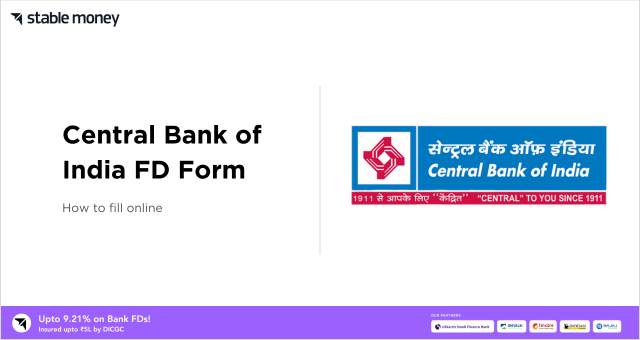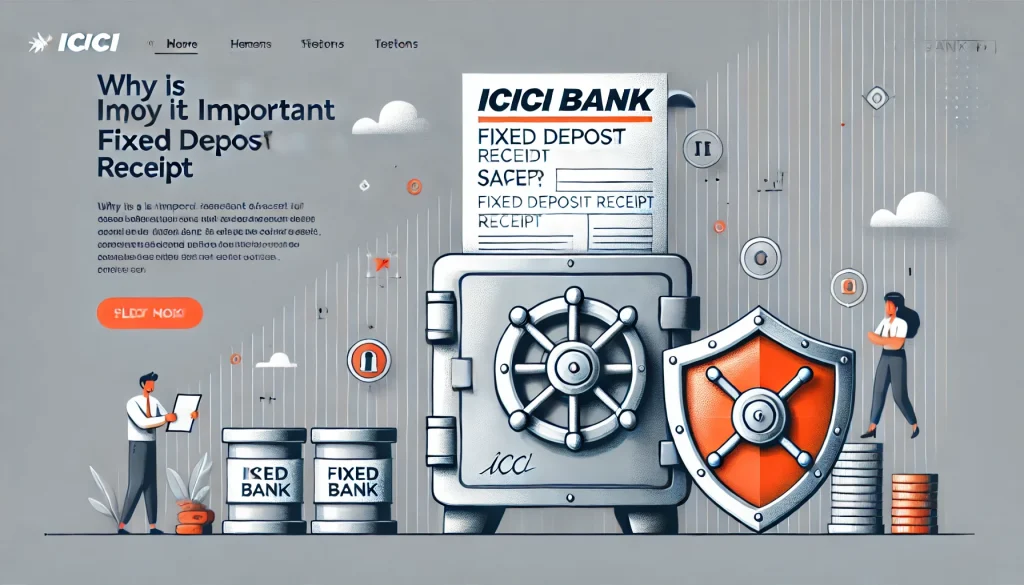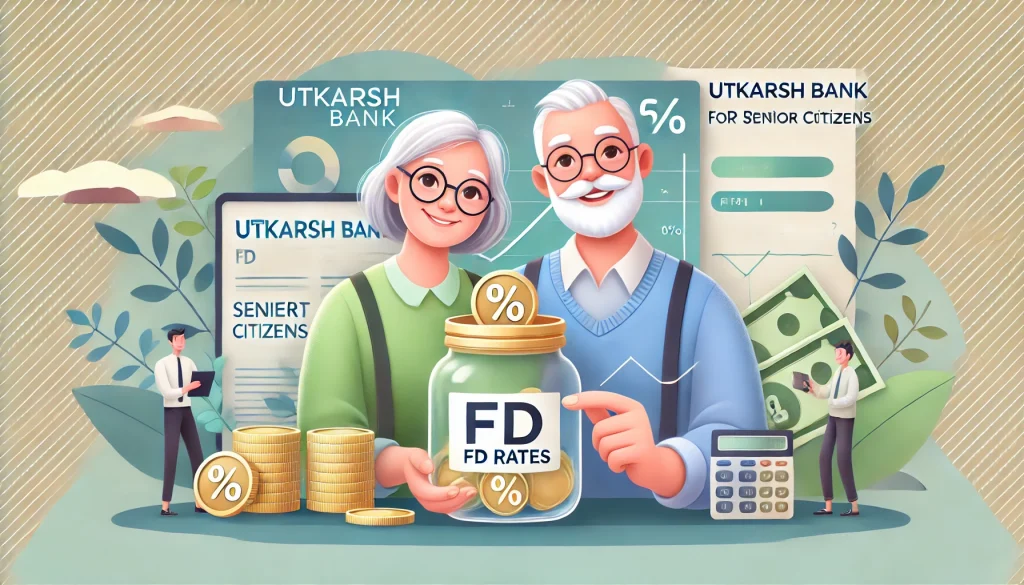
Established in December 1911, the Central Bank of India is said to be the first Indian commercial bank which is entirely owned and managed by only Indian citizens. Till now, the bank has a total number of 4,493 branches across the country. It offers a diverse banking portfolio including fixed deposits, a highly popular investment option among risk-averse customers.
To avail the benefits of its FD scheme, you need to obtain a Central Bank of India FD form and submit it after filling it with the required details.
What Is the Central Bank of India FD Form?
Fixed Deposit of the Central Bank of India offers flexible tenure options where you can choose long or short-term tenure as per your convenience. One can easily open an FD account with this bank by downloading the Central Bank of India FD form. Besides, you can reach out to your nearest branch of the Central Bank of India and ask for an FD application form.
How to Download the Central Bank of India FD Form?
In case you are searching for steps on how to download the Central Bank of India FD form pdf, read below.
- Step 1: Open the official site of the Central Bank of India.
- Step 2: Navigate to the right side of the homepage.
- Step 3: Click on the yellow-coloured ‘Download-Form’ icon.
- Step 4: You will be redirected to a page where you need to click on the ‘Account opening forms’ options.
- Step 5: Click on the ‘Deposit account opening form’ option.
Central Bank of India FD Form for New Customers
Below are all the sections you need to fill in the Central Bank of India FD form as a new customer:
- You need to write the date, branch name and number.
- Tick the type of account you want to open with the Central Bank of India.
- Write the initial deposit you want to make via cash or cheque.
- Fill in the total term of your deposit in terms of days, months, and years.
- Write your full name and CIN number provided by the bank.
- State the minor’s name and relationship with the minor in the case of opening a minor account.
- You have to state the mode of operations by ticking.
- Put your signature and attach a passport-size photograph.
- Write down the nominee’s details like name, age, mobile number, relationship with the depositor, etc.
How to Book FD with Central Bank of India FD Form?
Refer to the below-given steps to learn how to open a fixed deposit account with the Central Bank of India:
- Step 1: Go to your nearest Central Bank of India branch.
- Step 2: Collect the Central Bank of India FD form from the bank officials.
- Step 3: Fill out the form carefully.
- Step 4: You have to submit all the necessary documents along with the duly filled FD form.
- Step 5: You have to make your initial deposit.
Afterwards, the bank will verify each of your submitted documents and forms. Lastly, they will create an FD account and will give you an FD receipt.
How to Fill the Central Bank of India FD Form?
After you download the Central Bank of India fixed deposit application form online or collect it from your nearest branch, you need to fill in all the required fields in block letters with a black pen. Remember, there are no separate application forms for new and old customers. Moreover, you must take care while filling out the form to avoid any errors and make sure to attach the necessary documents while submitting.
Documents Required with FD Form to Open Central Bank of India FD
Have a glance at all the following necessary documents you need to keep handy to ease your FD account opening process with the Central Bank of India.
1. Identification Proof (any one of the following)
- Driving Licence
- Voter ID Card
- Passport
- UID (Aadhaar Card)
- Govt./Defense ID card
- Pan Card
- ID Card issued by a Reputed employer
2. Address Proof (any one of the following)
- Electricity Bill
- UID (Aadhaar Card)
- Ration Card
- Letter from a reputed employer
- Letter from any recognized public authority /local body/Income tax/wealth tax Assessment order
- Salary Slip
- Bank account statement
- Telephone Bill
3. Other Documents
- Service Discharge Certificate
- Birth Certificate (issued by Gram Panchayat/NAC(Notified Area Committee) /Municipal Corporation)
- Two recent passport-size photographs
- PPO (in case of Pensioner)
Note: If the customer is already an account holder of the Central Bank of India, the above-stated documents are waived.
Central Bank of India FD Break Form
All FD account holders have the option to close their accounts at the end of the tenure. Moreover, the Central Bank of India allows you to avail premature account closure options in case of any serious financial crisis. To avail this closure facility, you have to visit your nearest branch and collect the Central Bank of India FD break form. However, the bank will levy a penalty in such cases.
Final Word
The Central Bank of India holds a legacy of 109 years of offering attractive interest rates and tax benefits. The FD scheme of this bank includes monthly interest deposit receipts, senior citizen deposit scheme, money multiplier deposit certificate and many more, each catering to the different financial requirements of its customers.
Now that you have a comprehensive idea about the Central Bank of India FD form and other associated details, you can easily initiate the account opening process by obtaining the form.
FAQs
Individuals, minors, institutions, HUFs, illiterate persons, blind persons, and companies are eligible to open an FD account with the Central Bank of India.
Yes, you can open either single or joint FD accounts with the Central Bank of India.
Yes, you can avail the premature withdrawal facility. However, you will be charged with a penalty of 1% interest in case of an FD investment withdrawal of ₹5 lakhs.
The Central Bank of India will provide the maturity amount in cash if the FD investment amounts up to ₹20,000. In case of a higher maturity value, the bank will credit it to your registered bank account.
Yes, the Central Bank of India offers loans against investment on their fixed deposit account.
Disclaimer
This article is solely for educational purposes. Stable Money doesn't take any responsibility for the information or claims made in the blog.


